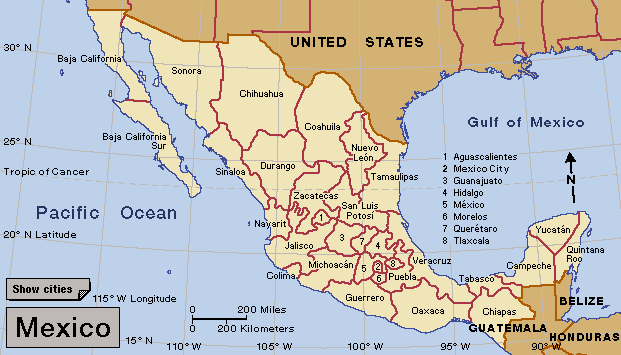Zacatecas << zahk uh TAY kuhs >> is a state in north central Mexico. It has an area of 28,283 square miles (73,252 square kilometers). At the time of the 2020 census, the population was 1,622,138. Northern Zacatecas is flat and extremely dry. The Sierra Madre Occidental mountain range dominates the rest of the state. The capital is also named Zacatecas.

Mining and agriculture are the chief economic activities in Zacatecas. Spanish colonists began mining silver in the region in the 1500’s. The wealth generated by silver funded the construction of beautiful colonial buildings in the capital. Today, Zacatecas exports barium, copper, gold, lead, silver, and zinc. Despite low rainfall and the absence of major rivers in the state, agriculture is a significant economic activity. The capital, Zacatecas, attracts many tourists. In 1993, the United Nations Educational, Scientific and Cultural Organization (UNESCO) added historic downtown Zacatecas to the World Heritage List. This list recognizes areas of unique natural or cultural importance.

The Caxcane and Zacateco Indians lived in what is now Zacatecas when Spain took control of the area in the 1500’s. Today, the state is home to their descendants. Spanish colonists founded the capital in the 1540’s. Zacatecas became one of Mexico’s original states in 1824. In 1914, during the Mexican Revolution of 1910, an important battle took place in Zacatecas between the forces of revolutionary leader Pancho Villa and General Victoriano Huerta. Huerta, a dictator, had seized control of the national government in 1913. The victory of Villa’s forces weakened the Huerta regime and contributed to its fall. During the 1920’s, fighting occurred in Zacatecas between the Mexican government and the Cristeros, Roman Catholic peasants protesting limitations placed on the influence of the Catholic Church.
